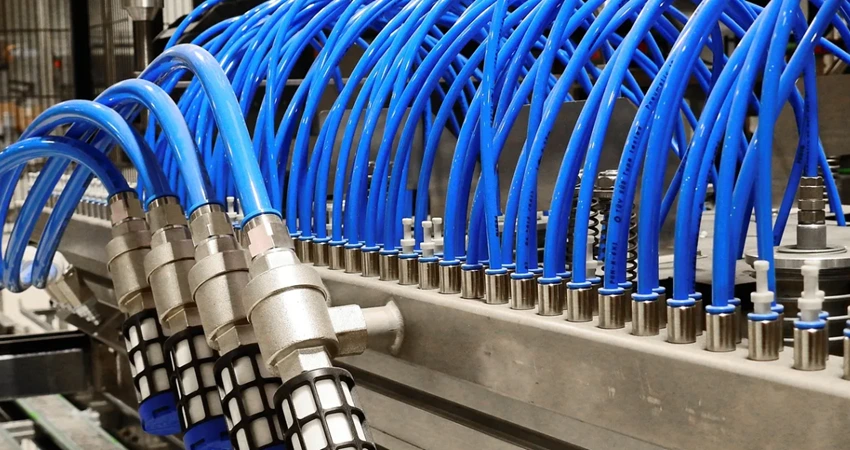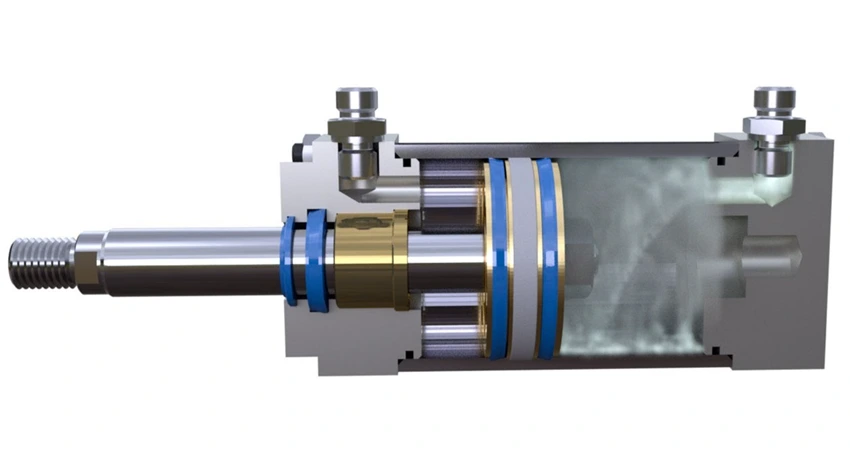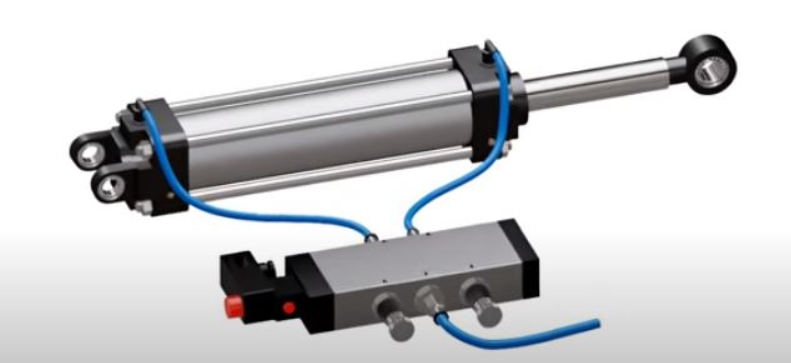Inductive displacement sensor
The most widely used variable-inductance displacement transducer in industry is LVDT (Linear Variable Differential Transformer). It is a passive type sensor. It is an electro-mechanical device designed to produce an AC voltage output proportional to the relative inductive displacement sensor of the transformer and the ferromagnetic core.
The physical construction of a typical LVDT consist of a movable core of magnetic material and three coils comprising the static transformer as shown in image. One of the three coils is the primary coil or excitation coil and the other two are secondary coils or pick-up coils. An AC current (typically 1 kHz) is passed through the primary coil, and an AC voltage is induced in the secondary coils. The magnetic core inside the coil winding assembly provides the magnetic flux path linking the Primary and secondary Coils.
When the magnetic core is at the center position or null position the output voltages are equal and opposite in polarity and, therefore, the output voltage is zero. The Null Position of an LVDT is extremely stable and repeatable. When the magnetic core is displaced from the Null Position, a certain number of coil windings are affected by the proximity of the sliding core and thus an electromagnetic imbalance occurs. This imbalance generates a differential AC output voltage across the secondary coil which is linearly proportional to the direction and magnitude of the displacement. The output voltage to displacement plot is a straight line within a specified range. Beyond the nominal range, the output deviates from a straight line in a gentle curve as shown in image.
The Rotational Variable Differential Transformer (RVDT) is used to measure rotational angles and operates under the same principles as the LVDT sensor. Whereas the LVDT uses a cylindrical iron core, the RVDT uses a rotary ferromagnetic core. A schematic of RVDT is shown in image.
Calculation of output voltage
Motion of a magnetic core changes the mutual inductance of two secondary coils relative to a primary coil
Primary coil voltage: Vin = sin (ωt)
Secondary coils induced emf:
V1 = k1 sin(ωt) and
V2 = k2 sin(ωt)
The value of k1 and k2 depend on the amount of coupling between the primary and the secondary coils, which is proportional to the position of the coil.
When the coil is in the central position, k1=k2
Vout = V1 – V2 =0
When the coil is displaced x units, k2≠k2
Vout = (k1-k2) sin (ωt)
Positive or negative displacements are determined from the phases of Vout.
Applications
LVDT can be used to measure the displacement, deflection, position and profile of a workpiece.
Advantages:
- Relative low cost due to its popularity.
- Solid and robust, capable of working in a wide variety of environments.
- No friction resistance, sin2ce the iron core does not contact the transformer coils, resulting in an infinite (very long) service life.
- High signal to noise ratio and low output impedance.
- Negligible hysteresis.
- Short response time, only limited by the inertia of the iron core and the rise time of the amplifiers.
- No permanent damage to the LVDT if measurements exceed the designed range.
- It can operate over a temperature range of -2650C to 6000
- High sensitivity up to 40 V/mm.
- Less power consumption (less than 1W)
Disadvantages:
- The performance of these sensors is likely affected by vibration etc.
- Relatively large displacements are required for appreciable output.
- Not suitable for fast dynamic measurements because of mass of the core.
- Inherently low in power output.
- Sensitive to stray magnetic fields but shieling is not possible.







